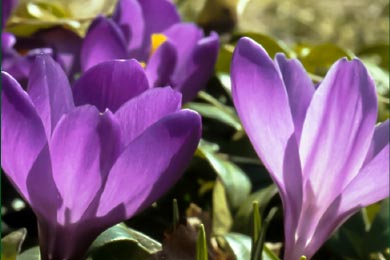Bulbs, Corms,Tubers & Rhizomes:
Often overlooked, bulbs are just the thing you're looking for when it comes to planting spectacular flowers and interesting colors in your garden.People ask us all the time for something different that they can add to their gardens that stand out from the good 'ole "box store yard". Bulbs are the answer. From the earliest of spring color with tulips to the humongous dinner plate dahlias in summer: greengate always seasonal bulbs in stock. Consider dainty and colourful varieties of Anemone or even giant Alliums. Don't forget holiday season's shining star, the Amaryllis. We have that too. Not sure where to start with your bulb additions? Not a problem! We can help at:


Lilies and Hyacinths are true bulbs, but there are several other classifications of bulbous plants.
Cattleya orchids have the large flowers that are often used for corsages.The first plants to bloom in the spring, one of the last plants to bloom in the summer, and everything in between, come from what gardeners commonly call bulbs. Many bulbous plants are commonly referred to as bulbs. Lilies and hyacinths are true bulbs, but there are several other classifications of bulbous plants.
A true bulb, such as a lily, is a short underground stem surrounded by thick leaves that protect the plant and store food for use by the emerging plant. New bulbs, or bulblets, are formed at the base of mature bulbs after flowering is complete. Mature bulbs then become dormant until the next season. Flowering alliums, which are members of the onion family, tulips, daffodils and hyacinths, are also bulbs.
Corms:
Corms are thick underground stems covered by protective leaves. These stems produce stems, leaves and flowers during one season. Individual corms last only one season, but new corms, or cormels, are formed on top of the old corms as they complete their growth cycle. These can be collected and stored for future planting. Gladiolas and Crocuses are corms.
Tuber and tuberous roots:
A tuber is like a corm, but can last for many years. Tubers can be divided by removing a section containing a bud, as would appear on a potato. Tuberous begonias are, of course, tubers. Tuberous roots are similar to tubers, but instead of a single stem, like a tuber, these are clusters of roots. Tuberous roots can be divided by removing a root section containing a bud and replanting. Dahlias are a good example of a tuberous root.
Rhizomes:
Rhizomes grow at or below the soil's surface. These stems increase in length, with new growth appearing along the length of the stem. Rhizomes can be divided by cutting off sections of the stem that contain growing buds and replanting. Irises are well-known rhizomes.
